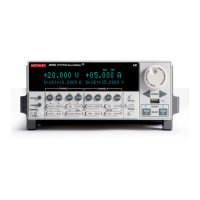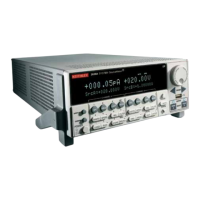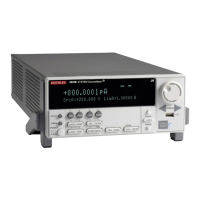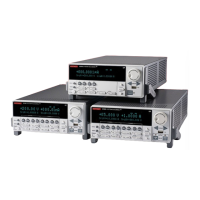2-6 Return to Section Topics 2600S-901-01 Rev. C / January 2008
Section 2: TSP Programming Series 2600 System SourceMeter® Instruments Reference Manual
Programming overview
What is a chunk?
A chunk is a single programming statement or a sequence of statements that are executed
sequentially. There are non-scripted chunks and scripted chunks.
Single statement chunk – The following programming statement is a chunk:
print ("This is a chunk")
When the above chunk is executed, it returns the following string:
This is a chunk
Multiple statement chunk – A chunk can also contain multiple statements. Each statement in the
line of code is to be separated by whitespace. The following chunk contains two statements:
print ("This is a chunk") print ("that has two statements")
When the above chunk is executed, the two statements are executed sequentially and the
following strings are returned:
This is a chunk
that has two statements
Multiple chunks – The following two lines of code are two chunks. The first chunk sets the source
level of SMU A to 1V and the second chunk turns the output on.
smua.source.levelv = 1
smua.source.output = smua.OUTPUT_ON
Scripted chunk – In a script environment, the chunk is the entire listing of test programming code.
If the two statements in the above example were created as a script, then those two lines of code
would be considered one chunk. See the topic below, “
What is a script?”
What is a script?
The Series 2600 utilizes a Test Script Processor (TSP) to process and run individual chunks or
programs called “scripts”. A script is a collection of instrument control commands and
programming statements.
Figure 2-1 shows an example of how to create (and load) a script
named “test.” When this script is run, the message “This is a test” will be displayed on the Series
2600 and sent to the PC.
As shown, a script is made up of a chunk of programming code that is framed by shell commands.
The first shell command in
Figure 2-1 loads the script named “test.” The last shell command marks
the end of the script.
The chunk in Figure 2-1 consists of three lines of code. When the chunk is executed, the test
messages will be sent and displayed. The following command executes the chunk: test()
